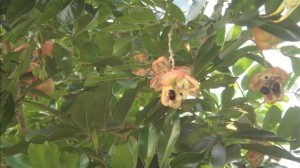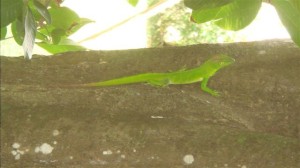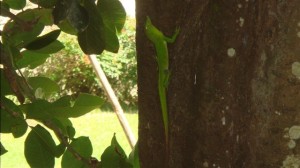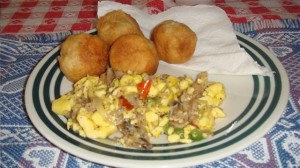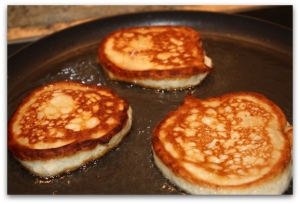The English language is a beautiful sound when spoken correctly. The Jamaican “English” on the other hand is even more delightful, colorful, expressive and downright amusing when spoken incorrectly.
We refer to this type of broken English as Patois. For some of us, it is still difficult to understand the real thing when confronted, but we have to admit, had they used the Queen’s English to express themselves, it would have made for a very boring tale.
Take for instance, this poor English Magistrate who presided over a case brought before the Court. Your Honor was commissioned from London to head court proceedings in Kingston. This was back in November of 1972 when we still had British influence in our judicial system.
Little did he know, with all his qualifications, knowledge and experience, he would have to rely heavily on his Clerk Of The Courts to assist in trying this case. Here is a copy taken from the original post dated November 19, 1972 in the Jamaican Gleaner, written by reporter Rudolph McDowell:
Ruckus in de yard
By Rudolph McDowell
MR. HENRY STAID, Resident Magistrate, sighed deeply as he contemplated the witness in the box. A large female, given to much gesticulation and a deplorable tendency to verbosity. Added to this, Mr. Staid was still having trouble with the language he daily had to contend with in the Court. At times he found it utterly incomprehensible, and he was secretly annoyed with those friends in England who had warned him that one of the advantages of a post to Jamaica, was that, unlike Asian or African countries, English was the spoken language.
He had struggled painfully to cope with the situation, but at the end of six months, he was still leaning heavily on his Clerk of the Court and kindly police officers for interpretation, not only of language, but also of the significance of allusions which were often totally beyond his comprehension.
During a pause between two bursts of volubility on the part of the witness, the Magistrate managed to interpellate question on the matter under jurisdiction.
‘You said…’ but before His Honour could proceed further the witness had caught her second breath.
‘Yes, Miranna”, she said sturdy arms akimbo, ” Gatta is de real cause of de ruckus in de yard. She an’ You-nicey have indicated feelings fe one annodder over a man for a long time NOW”.
“Now, now” said the Magistrate feeling his way through the murk of evidence. “You say that Gatta was the cause of the” — er-ruckus in the yard. Who is Gatta? Mr. Clerk, is Mr. Gatta to be called as a witness?”
“No Sah,” interrupted the witness before the clerk could reply. “Gatta is not a him. Gatta is a she.”
Then as the Magistrate raised an enquiring eyebrow, “Is a ‘ooman, she name Gatta, Sah.”
“Oh, I see. Her name is Gattasa.”
‘No Miranna is not Gattasa. Is Gatta, Sah”
“Gattasah?” .
“No, Miranna. Gatta Sah,
As matters appeared to be getting confusing, the Magistrate asked the Clerk if this was the name of a female- “Is she to be called as a witness?”
Cleric: “Yes; but her real name is Smith”.
R.M.: “Then why is she called Gatta’?”
Witness: “She real name is Gatta Simit, Miranna”.
R.M. to Clerk: “I thought you said her real name is Smith.”
Clerk: “Simit is the local pronunciation of ‘Smith, Your Honour”.
R.M. — “I see. The real name of the witness to be called is Miss.— or is it Mrs. — Gatta Smith?”
Clerk: “It is Miss, Your Honour, and her full name is A-ga-tha Miranda Smith. But in local parlane it is “Agatha, abbreviated to ‘Gatta,’
R.M. “Dear me. What a length of time to get at the root of a simple matter”.
Clerk: “Yes Your Honour”.
R.M- reading from his notes: — “You said that Gatta was the cause of the ruckus in the yard?”
Witness: “Yes Miranna. Mek de ruckus start.”
R.M. “What is this — er- you stated that Gatta did? What is a ruckus? – –
Witness: “A ruckus is a little bangarang, sah.”
R.M: — “What is a bangarang?”
Clerk, anxious to have the case proceed:— “Your Honour, a loud disturbance wit’ or without violence”.
R.M. “I see. And you referred to a person whom you somewhat affectionately called You-nicey? I take it that the person referred to usually acted the part of peace-maker, whenever, er-ruckuses occurred in the tenement premises?
Witness: — “You-nicey, peacemaker Miranna? A she a de cause of all de trouble in de yard anytime bangarang bruck out because of her su-su mouth.”
R.M. “I take it then that she has a physical defect of which she was acutely conscious and resented any reference thereto?”
Witness: — “Miranna”. ‘I don’t understand.”
R.M: — “She didn’t like any reference to her defective mouth? Then why is she called “You-nicey?’ I thought it was a term of regard or affection”.
Witness: — “No sah- You-nicey is her name”.
Clerk: “It is a Biblical name, your Honour — Eunice — locally p r o n o u n c e d ‘Younicey.”
R.M. “You referred to Younicey’s su-su mouth. What is the actual nature of the defect? Is it a hair-lip or a dislocated jawbone?”
Witness:— “Ef her jawbone did dislocate, den we would always have peace in de yard. Is de way she susu an’ mek labrish dat cause de trouble all de time”. ”
R.M.:— “What is labrish. What are the ingredients used in its manufacture that are the cause of trouble?”
Clerk:— “Labrish is another word for gossip, Your Honour”
R.M- “Dear me. The matter seems to be getting more and more complicated. I think we had better adjourn Court for the day. Tell all the parties in this matter to come back again on Thursday next week.
Prisoner in the dock:— “No, Miranna. Mek we finish wid it today. For ef you put it off dem gwine bring Mouta Massy Mirri fe come yah, and tell lie all day. After all, my matter is a simple, one, sence mi no sey what dem sey me sey, so you can jus’ dismiss de matter right away an’ don’t badda bring up de ruckus in de yard”.
R.M- “No, no. The matter has to be gone into thoroughly. The Court will now rise”.
Court Sergeant: “All will now stand. Court adjourned until 10 a.m. tomorrow
